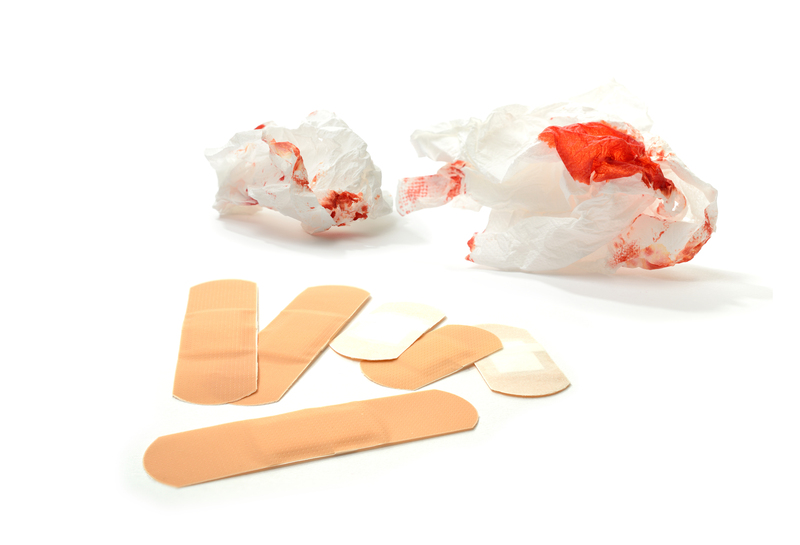Combatting Stubborn Damp Odors with Ease
Posted on 15/06/2025
Combatting Stubborn Damp Odors with Ease
Stubborn damp odors are a nuisance that many homeowners, renters, and property managers face. Whether it's in basements, bathrooms, closets, or kitchens, persistent musty smells can make living spaces uncomfortable and even indicate underlying moisture problems. In this comprehensive article, we'll explore the main causes of damp odors, guide you through effective removal techniques, and offer long-term solutions for preventing musty smells from returning. Discover how to maintain a fresh-smelling home with tried-and-tested tips for eliminating damp odors for good.
Understanding the Causes of Stubborn Damp Odors
Before tackling the odor, it's crucial to understand its origin. Below are the most common causes of persistent damp scents:
- Excess Moisture: High humidity levels or water leaks create the perfect environment for musty smells.
- Mold and Mildew: These fungi thrive in damp, dark places and are primary culprits behind stubborn odors.
- Poor Ventilation: Without proper air flow, moisture accumulates, leading to odors that linger.
- Fabric Absorption: Carpets, upholstery, and curtains easily absorb and hold onto moisture and its accompanying smells.
- Old or Inefficient Building Materials: Porous materials like wood or old drywall can trap moisture, sustaining musty odors over time.
Identifying the cause is the first step toward effective odor removal and long-term freshness.

How to Detect and Locate Damp Odor Sources
Locating the exact source of a damp odor is key to effective removal. Here's how you can pinpoint the culprit:
- Follow Your Nose: Move through the affected area and locate where the scent is strongest.
- Inspect for Visible Signs: Look for water stains, mold patches, or condensation on walls, ceilings, and floors.
- Check Hidden Spaces: Damp odors often originate in crawl spaces, behind furniture, under carpets, or within closets.
- Use Moisture Meters: A handy tool to detect elevated moisture levels in walls and floors--often before mold appears.
By thoroughly inspecting your space, you'll be better equipped to choose the right odor-fighting methods and alert professionals if needed.
Effective Techniques for Removing Persistent Damp Odors
1. Address the Moisture Source First
The most essential step in combatting stubborn damp odors is to eliminate the underlying moisture. Failure to do this means the problem will likely return. You can:
- Fix Leaks: Repair any leaky plumbing, roofs, or windows.
- Seal Cracks: Caulk gaps in walls and floors to prevent humidity intrusion.
- Improve Drainage: Ensure gutters and downspouts channel water away from your home's foundation.
2. Increase Ventilation and Airflow
For areas prone to damp, such as basements or bathrooms, improved airflow is a must:
- Open windows and doors regularly to allow fresh air to circulate.
- Use exhaust fans in bathrooms and kitchens during and after use.
- Deploy portable fans or an HVAC system to reduce humidity inside rooms.
Tip: Always keep furniture a few inches away from exterior walls to encourage air movement.
3. Deploy Dehumidifiers for Moisture Control
Dehumidifiers are lifesavers for areas with persistently high humidity. They efficiently extract excess moisture from the air, reducing the risk of mold and keeping damp odors at bay. When choosing a dehumidifier:
- Pick a size based on the square footage of the affected area.
- Empty the water tank regularly, or opt for a model with a continuous drain hose.
- Set the desired humidity level between 30% and 50%.
4. Clean and Disinfect Damaged Areas
Cleaning is crucial for eliminating stubborn damp odors. Start by removing items affected by moisture--such as old carpets, furniture, or fabrics. Then:
- Scrub hard surfaces (walls, floors, tiles) with a mixture of water and mild detergent.
- Disinfect with bleach (1 cup bleach per gallon of water) to eradicate mold and mildew. Always ventilate during cleaning.
- Wash fabrics using hot water or add a cup of white vinegar to the cycle to neutralize odors.
5. Absorb Odors with Natural Deodorizers
For lingering mustiness, natural absorbers can make a significant difference. Try the following:
- Baking Soda: Sprinkle generously on carpets or inside closets; leave overnight and vacuum thoroughly.
- Activated Charcoal: Place charcoal bags in strategic locations to capture odors and moisture.
- White Vinegar: Fill small bowls and set them in musty corners for 24-48 hours.
- Kitty Litter: Cheap and surprisingly effective for absorbing dampness and neutralizing smells.
6. Steam Clean Carpets and Upholstery
Soft surfaces like carpets, cushions, and drapes often trap moisture deeply. Professional steam cleaning or renting a steam cleaner can:
- Penetrate fibers and break down odor-causing particles.
- Removing stains, dirt, and spores that contribute to persistent damp scents.
7. Employ Commercial Odor Removers
If home remedies aren't enough, don't hesitate to use quality commercial products designed specifically for musty odor removal. Look for enzyme-based sprays that break down organic matter or products labeled for "odor neutralization." Follow all product instructions and test on a small area first.
Long-Term Prevention: Keeping Damp Odors Away
1. Maintain Humidity Levels
Keeping indoor humidity in check is your best defense against recurring dampness:
- Invest in a hygrometer to monitor humidity, especially in basements and bathrooms.
- Run dehumidifiers or air conditioners in warm, wet months.
- Open windows and doors for cross-ventilation--especially after showers or rain.
2. Regularly Inspect Hidden and Problem Areas
- Examine attics, crawlspaces, and basement corners for new damp spots or mustiness.
- Move furniture or storage bins occasionally to check the state of floors and walls.
3. Clean and Replace Filters Frequently
Home HVAC units and portable air conditioners recirculate air. Dirty or moldy filters can harbor odors, so:
- Swap out or clean filters every 1-3 months.
- Consider HEPA filters for extra mold and odor filtration.
4. Use Moisture Absorbers Continuously
Place moisture-absorbing products like silica gel packs, DampRid, or activated charcoal in closets, bathrooms, and under sinks. Check regularly and replace as needed.
5. Maintain Roofs, Gutters, and Foundations
- Clean gutters each season to prevent overflow and leaks.
- Inspect roof shingles and flashing for signs of damage.
- Address any foundation cracks to prevent water intrusion.
Special Cases: Basements, Bathrooms, and Closets
Combatting Basement Damp Odors
Basements are notorious for stubborn musty smells. For effective odor elimination:
- Install a sump pump and maintain drains to prevent standing water.
- Apply waterproof coatings to walls and floors.
- Store items in plastic bins instead of cardboard boxes, which absorb moisture and smells.
Eliminating Bathroom Musty Smells
- Run bathroom exhaust fans during and after bathing.
- Check regularly for leaks behind toilets and under sinks.
- Wash and dry shower curtains and bath mats weekly.
Keeping Closets Fresh and Dry
- Avoid packing clothes too tightly to allow for air circulation.
- Use moisture absorbers or natural deodorizers inside closed spaces.
- Never place damp or sweaty items in the closet; let them dry fully first.
The Health Risks of Ignoring Persistent Damp Odors
Stubborn damp odors aren't just an inconvenience--they're a potential health risk. Prolonged exposure to mold and mildew can cause respiratory issues, exacerbate allergies, and trigger asthma attacks. Children, the elderly, and immunocompromised individuals are especially vulnerable.
- Musty air can irritate eyes, noses, and throats.
- Certain mold species produce toxins (mycotoxins) that are hazardous in high concentrations.
- Odors often indicate water damage, which can erode structural integrity over time.
Acting quickly not only restores a fresh scent--it's essential for your well-being and the safety of your property.

When to Call a Professional for Damp Odor Problems
While many causes of stubborn damp odors can be tackled DIY-style, there are times when you should enlist expert help:
- You notice widespread mold, especially black or green patches.
- Odors persist even after thorough cleaning and drying efforts.
- There's significant water damage or you suspect structural issues.
- Family members experience unexplained health symptoms potentially linked to air quality.
Professional mold remediation specialists can perform a comprehensive inspection, use industrial air scrubbers, and ensure the safe removal of contaminated materials.
Summary: Breathe Easy with Proactive Odor Control
Combatting stubborn damp odors doesn't need to be a frustrating, ongoing battle. With the right knowledge and some elbow grease, you can identify moisture sources, remove persistent mustiness, and prevent it from coming back. Focus on addressing moisture issues first, then clean and deodorize affected areas using both natural and commercial methods.
- Always start by eliminating excess humidity and repairing leaks.
- Keep air moving and use dehumidifiers to discourage the growth of odor-causing mold.
- Clean, treat, and deodorize both hard and soft surfaces thoroughly.
- Don't forget long-term maintenance and regular inspections.
By incorporating these tips and techniques, you'll soon enjoy a fresh, welcoming atmosphere throughout your home--one where stubborn damp odors are a thing of the past!



